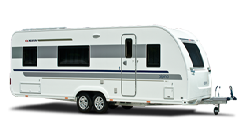
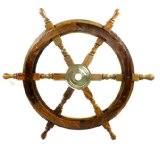
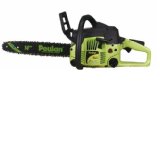
Search This Site
Search With Google
Bonsai Calendar
Repotting can also commence now, as can the harvesting of seeds.
Autumn -
Visually for the bonsai, this is a beautiful time of the year. The fruit and berries are mature and colourful and there will be a mix of autumn leaves. A special time of the year for us when the camera comes out almost every day.
In warm zones repotting can commence in earnest, wiring must be continued and continual inspection for insects must not cease. You can also still collect seeds in this month.
Autumn -
A good month for a general clean up. The pots will be dirty and have soil splashes on them from the watering and wind. Check out your years work and monitor the shape and positions of all branches on your bonsai. If you think changes need to be made, then make a note for future shaping.
This month is a good time for collecting moss. Cool weather and rain is the ideal environment for moss to flourish. Keep this moss moist and store it properly for future use.
You can still do some repotting now but you do need to be observant for early frosts and the on set of early winter. Any of your trees that require winter protection should now be moved to suitable places.
Winter -
If your area is very cold at this time of the year it is time to stow away your bonsai in sheds or greenhouses. If you do use interior heating be careful not to overheat as new shoots could spring up. Continue with watering, though on a restricted level, and do not let the plants dry out.
If the weather is ok your display areas can be cleaned and any moss can be checked over for weed growth.
This month may see certain insects like grasshoppers and hardy caterpillars still active. If there are no leaves left on the bonsai from the autumn fall, these insects will munch on the buds and bark.
Repotting can still be done this time of year but greenhouse conditions are required.
Winter -
As with the first month of winter there is not so much activity to be getting on with. Just give a general check over of pots, moss and foliage of your evergreens. Use your moisture meter to check the soils for moisture content levels and water only if required.
You can dig your plants now from the garden and root prune them. After place them in training pots.
Winter -
The perfect month to sow seeds and for the propagation of any future bonsai by seed.
Buds may begin to swell so you may need to remove wire to avoid losing the buds.
A fertilizer program can be planned and begun for those bonsai that are not to be repotted.
Spring -
For any bonsai that have been stored over winter, now is the time to bring them out in to the open. We are entering the most active period for bonsai growing.
Any new shoots need to be pruned if they are soft and succulent. You can remove this by hand rather than using cutters. By pinching by hand there is very little scarring. This is a time for rapid growing so any wiring has to be checked and double checked.
Seed sowing can be continued and when the seedlings are big enough they should be removed, root pruned and potted on.
You will notice that there is more insect activity now as well. Spraying for control will begin.
Your watering plan has to be adjusted to allow for the increase in temperature and the more growth from your bonsai and a fertilizer program can now start.
Spring -
This month one needs to be ready for any temperature changes and be prepared about hydration of your plants and soil.Excess heat can damage the young new leavesand crack up the moss. You need good areas of shade available to you and maybe even burying the bonsai pots in trays of soil to help keep them cool.
This time of year the trees will be near their peak of growth and long and lush shoots will be in abundance. You can let these shoots mature a little or cut them back to 2 or 3 buds.
Watering most definitely needs to be done on a more frequent basis and thorough scrutinization is essential for insect attack. Continue with your fertilizing schedule.
Spring -
Late flowering bonsai will have their blossoms now which will last until early summer. Some pruning may be required.
At the end of spring annual growths are nearly completed and pruning for size and control is necessary. Do not forget to do the wiring as well.
The fruit fly is an invasive insect just now so be very observant in particular with fruit bearing bonsai.
Cuttings can also be collected now.
When growing and collecting bonsai it is important that you always keep a keen eye on your collection to ensure that they are healthy and thriving. Checking them everyday only takes a couple of minutes, but you can be rest assured that there are no pests causing havoc with them. As well as daily monitoring there is also a "bonsai calendar" for you to follow to give your bonsai an annual cycle of care.
Summer -
In this month temperatures can range from 35 to 38 C in temperate and sub tropical zones and the bonsai trees will require some extra protection. For bonsai that are from colder climates, they will need to be relocated to cooler and shadier spots to protect them from the heat. They will also require watering on a more frequent basis, perhaps even daily. But you can monitor the moisture content levels of their soil with a moisture meter to ascertain the necessary watering requirements.
If you are going on holiday in this month, which many people do, then help for your plants needs to be organised. Dunking is one solution, rather than just watering, for these long prolonged hot periods and full shade for many plants could be a better alternative than excessive watering patterns.
The first month of summer is also a very busy and active time of the year for insects. So you must continue the spraying program that begun in spring and continue to check your plants visually for any issues.
Summer -
Because of the hot weather any work on bonsai is quite restricted. The main concern for the grower is protecting the bonsai from heat burning and drying out. In Japan they keep their trees exposed to the sun and heat, but this can prove to be fatal to the tree in a warmer climate as the soil in the pot will dry out very quickly. Water deprivation will lead to leaf burning and a not nice looking tree for the rest of the year.
In heatwave conditions it is better to continually mist bonsai with a hose attachment which gives a cooling effect to the plant. This is definitely better and more beneficial to the plant than just applying huge amounts of water to the soil.
If any of your bonsai still have wire attached to them you must pay specific close attention to them. The last thing you want is for the wire to bite in to the tree and cause scarring. Remove the wire if it is no longer required.
Summer -
Hot temperatures will reduce and in certain cases stop growth of your bonsai. Many bonsai can tolerate extreme heat but examples such as maple and beech do need constant monitoring.
Wiring can be begun at this time of the year on the spring shoots which should be starting to mature by now. The spring shoots are classified as semi hardwood after about 12 weeks.
This 3rd month of summer is prime time for the insect world. Caterpillars are abundant and they start eating the moment they are born. Many are almost invisible to the eye when first hatched. When at they they are extremely well camoflaged as well. Check the undersides of all your bonsai and be very thorough as they can be difficult to detect. You need to continue your spraying program as well to the end of autumn.
Any seedlings you have that are not yet potted can be pricked out, root pruned and potted. Any rooted cuttings should also be root pruned and potted. Protect them all from the heat until they are well established in their new pots.
Autumn -
There can still be high temperature spurts in this month so stay prepared. Now is the time that the growing season comes to an end, so no more fertilizers are required and leaf fall will begin to start.
But it is an active time to start working hard. Any wayward branches can be rewired and their positions set. Any new shoots that have sprung should also be wired and positioned to the most advantageous positioning. Your seedlings too should be well established by now and require their first wiring and shaping.
Pruning can commence. Concentrate on those shoots that have been boosted and affect the balance of your tree. You may need to cut them to fit in with the whole appearance of their tree.
Moisture Meter Guide 2010 Contact details:garnett65@hotmail.com
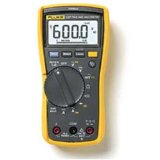

The complete moisture meter website
Moisture Meter Guide
Boat Moisture Meter
A moisture meter proves itself to be a useful tool when testing the moisture content levels of boat materials. When assessing a boat, care, judgement and experience should all be employed and then the moisture meter used as the last tool to give the final assessment. Testing boat hulls
Need A Chainsaw For Firewood?
The petrol chainsaw is used to fell trees, as well as for pruning and cutting overgrowth. Tree surgeons favour the petrol chainsaw and use it for cutting away branches and foliage. How to cut firewood
Orchid Moisture Meter
The orchid belongs to a widespread and very diverse family of flowering plants which have fragrant and colourful blooms. Orchids can be found in pretty much every habitat How much water do orchids require
Caravan Moisture Meter
Any caravan that is kept open to the elements all year round can become very susceptible to damp and damp related problems if proper precautions are not taken to prevent this. condensation in caravans
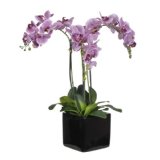
Garden Moisture Meter
The garden moisture meter helps any avid gardener to measure and monitor many different conditions to ensure that they can maintain healthy growing conditions for both indoor as well as outdoor plants. In order to have healthy thriving plants Overwatering can damage your garden


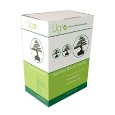
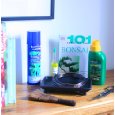
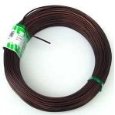
Bonsai Tree Training
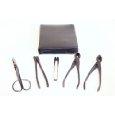
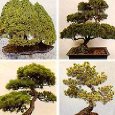
Bonsai Plants
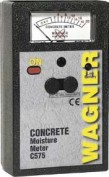
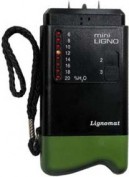
| Tramex Moisture Encounter Plus |
| Tramex Compact Wood Moisture Meter |
| Tramex Concrete Encounter Moisture Meter |
| Tramex Skipper Plus Moisture Meter |
| Tramex Roof And Wall Moisture Scanner |
| Sonin Digital Moisture Meter model 50218 |
| Sonin Digital Moisture Meter 270 model 50270 |
| Sonin Moisture Test Tool model 50210 |
| Sonin Moisture Test Meter Model 50211 |
| Oak |
| Douglas Fir |
| Beech Tree |
| Elm Tree |
| Hickory Tree |
| Maple Tree |
| Pine Tree |
| Prevent And Repair Gaps In Wooden Floorboards |
| How To Fix A Squeaky Hardwood Floor |
| How To Repair A Hardwood Floor That Has Buckled |
| Which Is The Best Firewood? |
| Concrete |
| Concrete Moisture |
| Screed Moisture Meter |
| SDS Drill |
| Belle Cement Mixer |
| SDS Drill Advice |
| Which SDS Drill |
| SDS Drill Accessories |
| Drilling Into Concrete |
| Kennedy Tool Box |
| Moisture - Basic Facts |
| Types Of Damp |
| Wet Rot |
| Dry Rot |
| Mold |
| Water Leak Detection |
| Stucco Moisture |
| Water Damage |
| Moisture And Rust |
| Moisture Damage To A Chimney |
| Wallpaper Stripper |
| Plaster Mixer |
| Why Worry About Moisture Problems |
| Does Your Home Have A Moisture Problem? |
| How To Solve Moisture Problems |
| How To Use Anti Mold Paint |
| Rising Damp |
| Condensation |
| Salt Damp |
| How To Avoid Bathroom Condensation |
| How To Remove Black Mold |
| How To Prevent Bathroom Mold |
| Soldering Kit |
| Soldering Kit Contents |
| Soldering Kit Advice |
| Bonsai Tree Classification |
| Growing Bonsai From Seed |
| Bonsai Tree Care |
| Bonsai Tree Training |
| Bonsai Tools |
| Displaying Bonsai |
| Bonsai Calendar |
| Bonsai Plants |
| The Thirsty Light Curve Moisture Meter |
| The Thirsty Light Ladybird Moisture Meter |
| The Thirsty Light Bumble Bee Moisture Meter |
| The Thirsty Light Butterfly Moisture Meter |
| Hanna Instruments |
| Agratronix Portable Coffee Moisture Tester |
| Lawn Aerator |
| Lawn Roller |
| Lawn Rake |
| Lawn Sand |
| Chainshot |
| Chainsaw Gloves |
| Chainsaw Trousers |
| Chainsaw Boots |
| Mac 4 - 20 XT Chainsaw |
| Mac 738 Chainsaw |
| Mac 842 Chainsaw |
| Mac 20X Power Chainsaw |
| Einhell BG-PC 3735 Chainsaw |
| Einhell BG-PC 4040 Chainsaw |
| Einhell BG-PC 5045 Chainsaw |
| Poulan P3314 Chainsaw |
| Poulan P4018 Chainsaw |
| Poulan Pro PP3816AV Chainsaw |
| Poulan Pro PP4218AVX Chainsaw |
| Poulan Pro PP4620AVX Chainsaw |
| Efco MT 4100 SP Chainsaw |
| Efco MT 3500 Chainsaw |
| Efco 132 S Chainsaw |
| Efco 147 Chainsaw |
| Efco 152 Chainsaw |
| Efco MT 7200 Chainsaw |
| Efco MT 8200 Chainsaw |
| Efco MT 3750 Chainsaw |
| Methods Of Obtaining Soil Moisture Levels |
| Hygrometer |
| Psychrometer |
| Rain Gauge |
| Wave Ventilation System |
| Humidity |
| Hygrometer For Keeping Reptiles |
| Humidor |
| Weather Stations |
| Musical Instrument Storage |